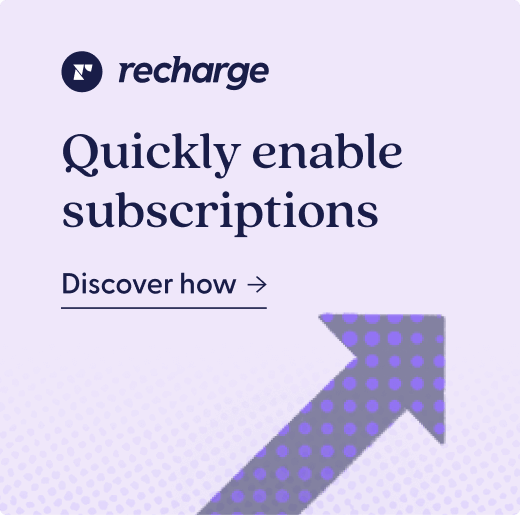People have been transporting wine around the world for thousands of years—so if you thought wine deliveries are a relatively new creation, think again. While today’s wine shipments look a whole lot different from those of ancient Mesopotamia, it should come as no surprise that there continues to be proven consumer interest in these offerings.
The bottom line? Wine subscriptions have the potential to be incredibly valuable for ecommerce merchants. In the subscription ecommerce industry, Food & Beverage merchants consistently lead the pack in customer lifetime value (LTV) and average order value (AOV). And when it comes to wine specifically, according to one report, wine clubs grew their membership base by an average of 21.8% in 2021.
Are you starting a wine club of your own, but not sure where to begin? Wondering how you, as a merchant, can navigate the unique complexities of wine laws and regulations? We’ll delve into all of this below.
Key takeaways
- Wine subscription boxes involve recurring deliveries of wine that are often organized around a certain theme.
- In addition to regular wine shipments, wine club members sometimes receive access to other special benefits, like discounts, early access to new products, and tasting notes.
- Consider wine product bundles as a way to add value for your customers and increase AOV for your business.
- It’s crucial to build out your tech stack to accommodate the unique complexities of selling and shipping wine, the laws around which can vary dramatically from region to region.
What are wine subscription boxes?
In the wine industry, subscriptions and memberships are nothing new. For decades, many wineries and liquor stores have offered recurring deliveries of wine in exchange for an annual or monthly fee. Wineries have been drawn to the opportunity to extend their business to a wider group of consumers outside the tasting room. Consumers, meanwhile, have been drawn to the convenience and trust factor of regular shipments of their favorite wines.
With the massive growth of subscription ecommerce, a variety of new wine subscription boxes have emerged. Today, there are seemingly endless options for consumers to purchase wines online on a recurring basis. This makes it all the more important for brands to make sure their logistics are airtight and their brand identity is well-matched for their target audience.
The complexity of U.S. wine laws
One of the unique advantages of DTC ecommerce is that it allows businesses to market their products to consumers from all over. However, with wine, this can present unique challenges due to direct-to-consumer wine shipping laws in the United States, which can vary greatly from state to state.
For wine subscription box companies, this can impact the permits needed to sell and ship wine to certain states, as well as taxes, volume limits, product restrictions, and reporting requirements. This means it’s crucial that these businesses read up on the different laws and regulations impacting their core product to ensure compliance. To facilitate the process, some DTC companies may consider partnering with a wine distributor who already sells and ships wine.
9 best practices for starting a wine subscription
To build a wine subscription box business that stands apart in the sea of competitors, consider the following tactics for your business strategy.
1. Study your audience’s relationship with wine
A person’s relationship with wine impacts not only the wines they choose and the amount they’re willing to pay, but also the words they use to describe it, the labels they’re drawn to, and the foods they enjoy it with. This can—and should—have an enormous impact on your brand identity, from the voice and tone of your copy to your website design, product descriptions, custom label art, and more.
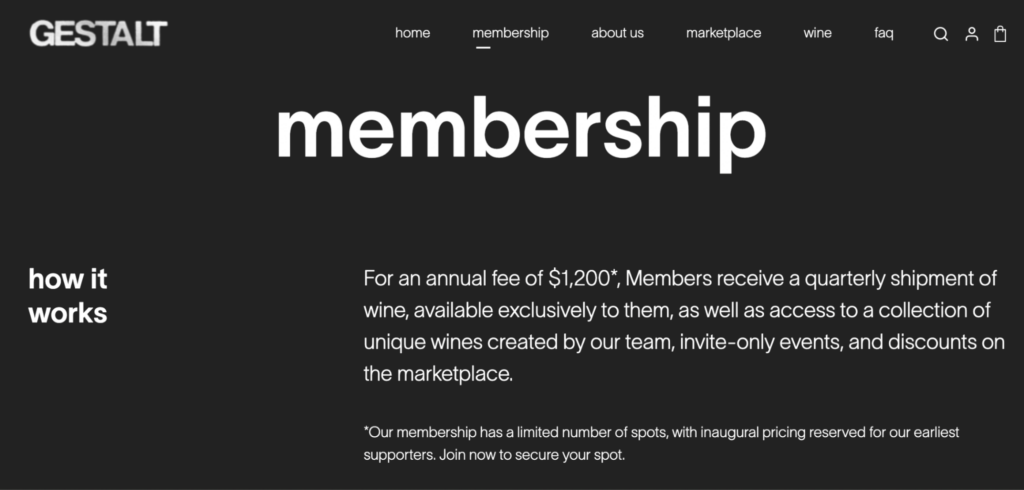
First things first, consider who you’re selling to. Be sure to ask yourself the following questions:
- How familiar is my target audience with the world of wine?
- What styles of wine appeal the most to my target audience?
- How much are my customers willing to pay for wine?
- How interested are my customers in learning more about wine?
- In what settings do my customers enjoy drinking wine?
- Does my target audience enjoy pairing wine with food?
Once you form a deeper understanding of your key customers, you can mold your brand around these factors.
2. Find your product niche
Many people have distinct preferences when it comes to wine. To stand out, you can target your offerings to appeal to a distinct product niche. For example, interest in organic wines has proved to be substantial in recent years, with the global organic wine market size estimated at $8.9 billion USD in 2021. Some businesses, meanwhile, may find their niche in sparkling wines or bottles from a certain geographic area.
3. Consider your word choice
One of the most polarizing factors in the world of wine is the language used to describe it. Wine has a vocabulary all its own used to describe certain flavors, geographic indicators, appearance traits, and more. For some wine drinkers, these words can help them develop a precise understanding of the qualities in a glass before they drink it. But for others, these words can sometimes have an alienating effect.
This makes it key for you to conduct research on your target audience. Is it important to them to know the specific appellation or acidity level of a wine before they purchase it? Will they feel intimidated by certain wine descriptors? The answers to these questions will have an enormous impact on the way you market your products and build your site.
4. Act as a digital concierge
Many settings involved in buying wine involve some sort of in-person guide—a sommelier, a shop attendant, a tasting room manager—that can help consumers through the process of finding the right bottle. Make sure the element of the concierge is present on your site in digital form. For example, many ecommerce wine brands provide quizzes or chatbots to help customers select options that fit their unique taste.
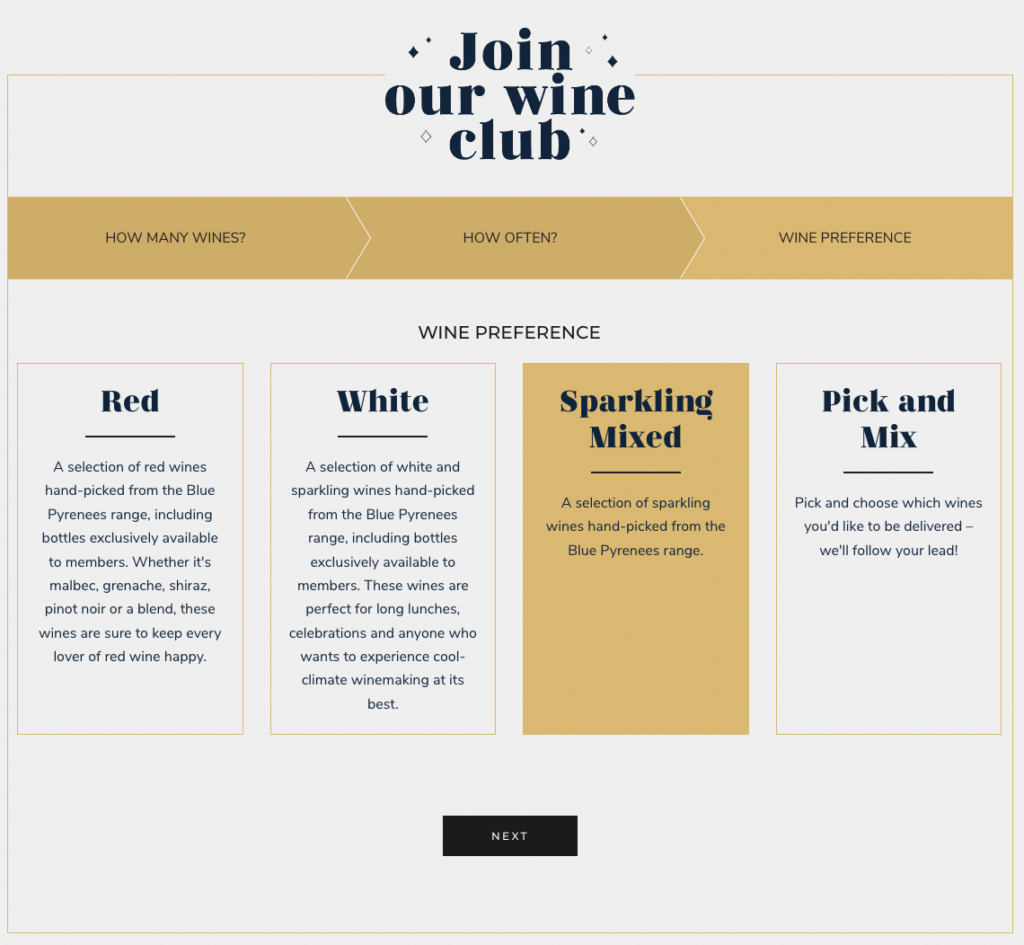
Depending on their format, these quizzes can not only help your customers find their best subscription option, but also help your online store gain deeper, more accurate insights into your customers’ behavior and preferences. Down the road, this will allow you to pivot your strategies more effectively, fostering greater brand loyalty and customer satisfaction.
5. Hone in on your product detail pages
Unlike when they visit a restaurant, winery, or brick-and-mortar shop, your ecommerce customers can’t try your wines before they buy them. This makes it all the more important to create clear and compelling product detail pages (PDPs) that help customers imagine what your wines taste like and select the ones they’re most likely to enjoy.
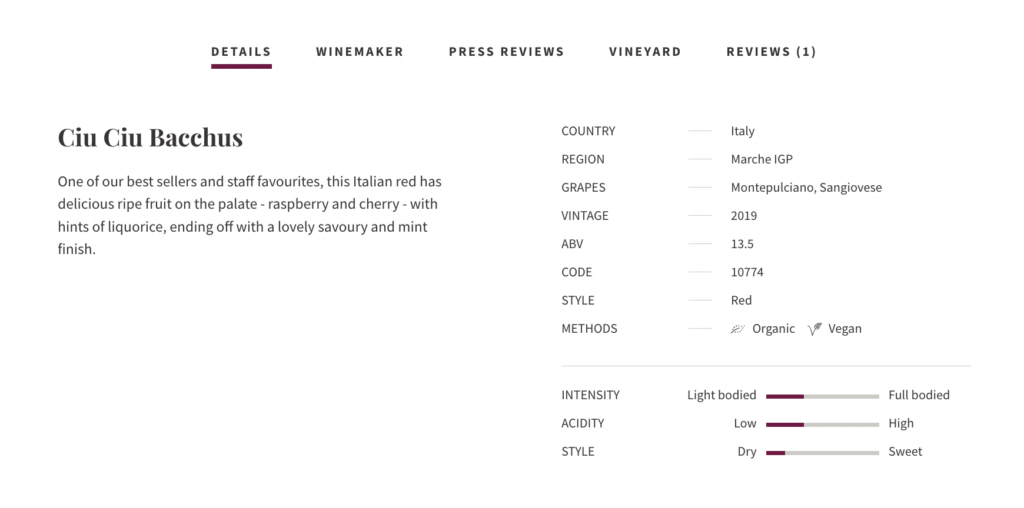
While keeping your audience’s familiarity with wine in mind, be sure to have some description on each PDP that describes the wine’s flavors. Depending on your customer base, you may be able to get creative with these descriptions, which presents a great opportunity to infuse your brand voice into the page.
The sweetness of a wine can be a particularly polarizing quality, so be sure to describe this in some way on each page as well. Other details to include are the wine’s vintage, any regional details, the ABV, the grapes it was made with, product photography, and any unique winemaking methods, such as if the wine is vegan (not all wines are!).
6. Be clear about the process & benefits
All subscription brands should clearly detail the way their subscriptions work on their website, and wine subscriptions are no exception. For many consumers, purchasing wine online is unfamiliar territory. And even if a customer holds subscriptions to multiple wine clubs, each one might work slightly differently.
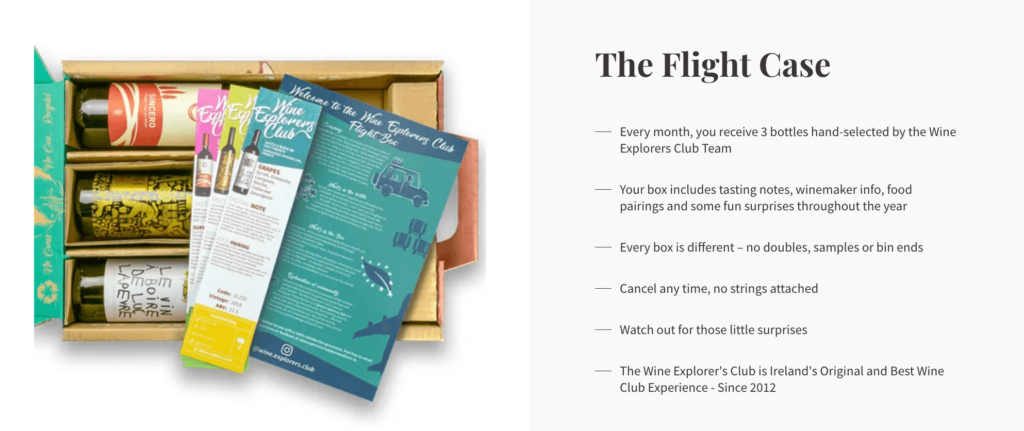
On your website, make sure to explain the following elements of your wine club program:
- How frequently will customers receive their shipments?
- How many bottles of wine will be included in each shipment?
- What types of wine will be included?
- What are the shipping fees for each delivery?
- Can customers make changes to their subscriptions, and if so, how?
- Are there any extras included in each delivery, like tasting sheets or pairing notes?
- Does your wine subscription have any membership-style benefits, like access to virtual events or gated content?
7. Consider product bundles
One of the greatest ways that wine subscription box companies can deliver unique value is through curation. This makes offering product bundles a prime strategy that wine subscription box companies can use to not only attract, but also retain customers. What’s more, product bundling is a powerful tactic for increasing AOV.
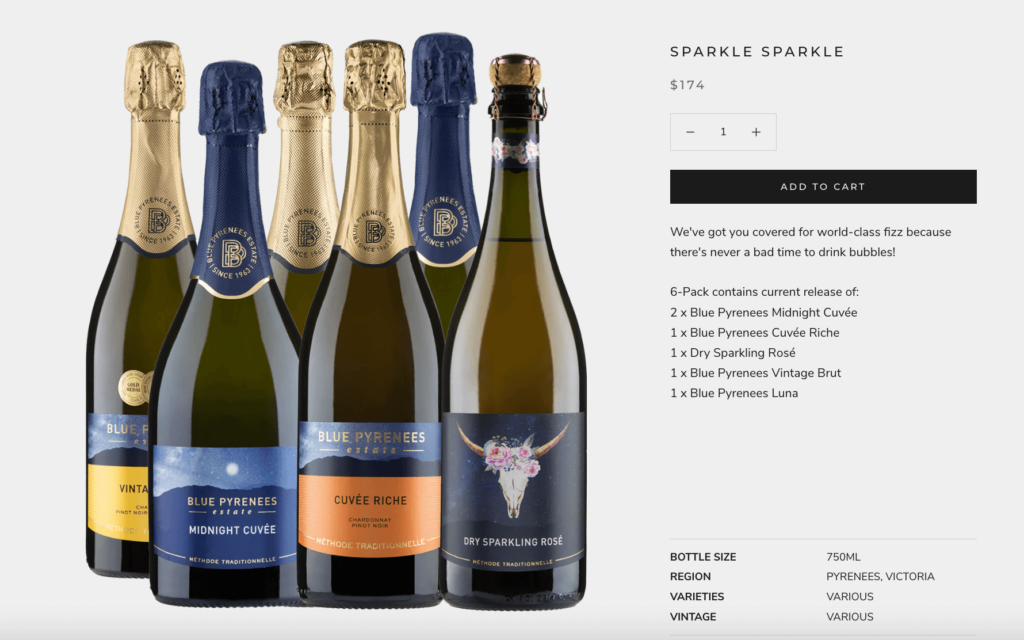
You’ll commonly see ecommerce wine brands bundle their offerings by type: red, white, and sparkling wines. Other ways to bundle wines include:
- Bestseller collections
- Collections of bottles from a certain geographic area (e.g. Southern Italian wines)
- Collections of bottles from a specific vintage (this makes a popular birthday or anniversary gift)
- Collections of bottles for certain occasions or holidays, like New Year’s Eve or Valentine’s Day
- Build-your-own wine bundles
8. Don’t overlook packaging
When it comes to wine packaging, there are two important factors to consider: practicality and presentation. Wine bottles are heavy, and because they’re typically made of glass, they’re also breakable, making it crucial to provide sturdy, well-cushioned packaging that can withstand the shipping process. At the same time, wine is often considered a luxury or special occasion product, making it well-suited for unboxing experiences that surprise and delight customers.
As you consider your brand’s packaging, be sure to strike the right balance of these elements. You can also include “extras” in each delivery, like shelf-stable food pairings related to the wines in the order or printed tasting sheets with notes from master sommeliers to provide an at-home guided tasting experience for customers.
9. Build out your tech stack wisely
To build your wine subscription business on a solid foundation and ensure you’re set up to scale, it’s key to choose the right subscription management solution for your business. This can help take the guesswork out of selling wine via subscription, allowing you to deliver better customer experiences that keep your subscribers coming back.
Wine brands may want to consider a holistic subscription management solution, which can enable a quick subscription launch and power a variety of integrations, like tax, shipping, or customer relationship management (CRM) tools. Use our interactive guide to subscription management solutions to pinpoint the right provider for your business.
Apply these strategies to your own wine club
The market for wine box subscriptions remains highly competitive, and it’s never been easier for customers to select and enjoy a variety of wines from the comfort of their own homes. Yet with this competition comes enormous potential for ecommerce merchants. Follow these strategies to create an offering your subscribers will love, and be sure to prioritize their perspective every step of the way.
Sources
[1] The 8,000 Year Effort To Transport Wine Around The World (VinePair)
[2] The State of Subscription Commerce 2022 (Recharge Payments)
[3] 2021 Direct-to-Consumer Wine Survey Report, Results and Benchmarks (SVB)
[4] Direct-To-Consumer Shipping Laws for Wineries (Wine Institute)
[5] Organic Wine Market Size, Share & Trends Report, 2022–2030 (Grand View Research)
[6] Wine Tasting Terms (Jancis Robinson)
[7] What is a wine appellation? (Wine Spectator)

